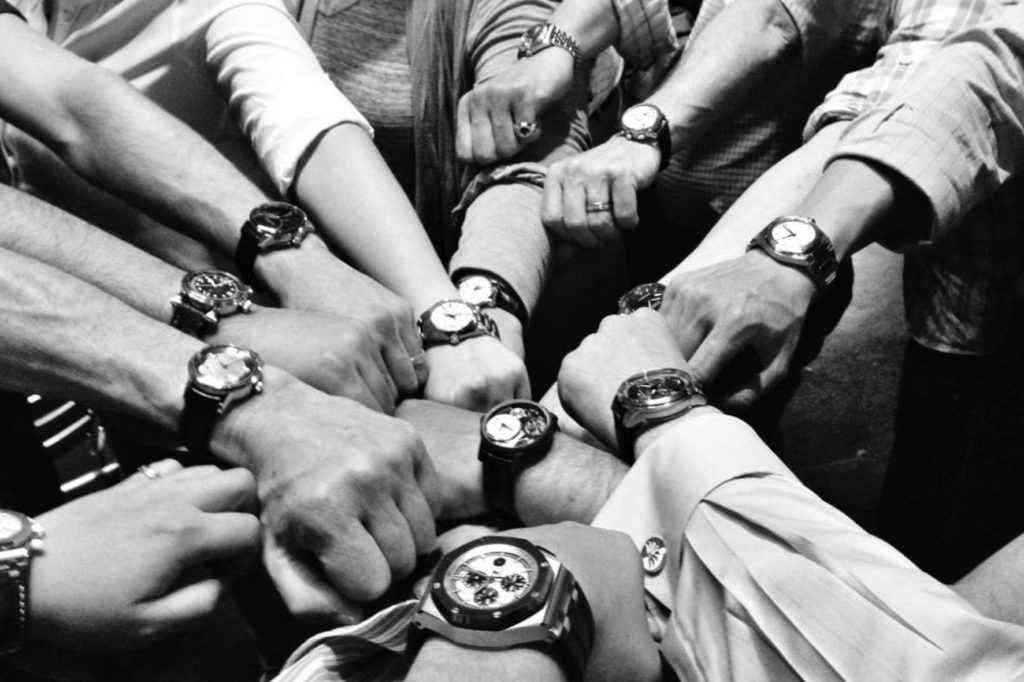Pricing and affordability: how the market has changed in recent years
10 May 2021Italian enthusiasts, who grew up on hands, time-alternations and Spritz with Campari, always ask us a handful of basic questions about watchmaking. They concern pricing, culture and access to this wonderful world. Regarding the first question, the theme is as follows: it is all well and good that a mechanical watch is not a basic good and that the average Italian purchasing capacity, in recent years and for various reasons (useless to get into in this context), has dramatically decreased (so much so that the widespread Italian middle class was an exception in the Western world – and today it is reduced to a mere trickle, homologating the Belpaese with the rest of the world, where there are rich and poor and the gap between them is getting ever wider). But is it justifiable that the prices of watches have generally increased so much in recent years?
THE BEST SELLERS AS EXAMPLES
Here are some steel best sellers for the various segments. His Majesty the Nautilus, on the 2007 official price list cost 13,900 euros; today, in its last year of sale, it is priced at 30,860 euros. The Audemars Piguet Royal Oak Ref. 15300 in 2005 cost 9,100 euros; today its restyling, the Ref. 15500, is worth 23,400 euros. Omega’s long seller, the “Moonwatch” with esalite glass Ref. 3570.50 in 2008 cost 2,470 euros; its current equivalent is 6,300 euros. At Rolex, in 2005, the Submariner no date Ref. 14060M was priced at 3,560 euros; now it is 7,750 euros, while the Daytona Ref. 116520 had a price tag of 6,310 euros and now its “upgrade” (Ref. 116500LN) costs 12,600 euros. In the even more premium segment, let’s take a wonderful model that all connoisseurs rightly adore, the Datograph in platinum by A. Lange & Sohne: in 2005 it had a price tag of 42,500 euros, currently it is 95,700 euros.

Some of these watches, in terms of aesthetics and technique, remained almost identical to their predecessor. Others have seen important improvements: just think of the Moonwatch, which has become a Co-Axial Master Chronometer, or the Submariner, which in the Ref. 124060 update is essentially another watch, improved in every way. But the question everyone is asking is whether these increases are justified or not. Especially when you think of the universal fairness relationship that must exist between companies and customers, and also considering that the Swiss watchmaking brands made their living by selling to European and American customers – that was before the Eldorado represented by the advent of consumerist China, the new markets and the new rich in general. And mind you. Here we do not want to go into the economic investment field. We all know that for some of these “rare and exclusive” models, being able to buy them at the price listed is a privilege reserved to very few.
THE REAL ISSUE: IS ACCESSING BEST SELLERS STILL POSSIBLE?
So, in addition to the steady increase in price, let’s shift the focus to the second question that enthusiasts are asking: is accessing the industry’s most beloved models, in fact, still possible? The answer, unfortunately, is no. Why? Simple and inevitable: the majority of enthusiasts are deprived of the possibility of attaching their dream watch to their wrist because of the current distribution choices favoring product quotas, and a generalized dynamic – and already consolidated for some brands – that moves the most coveted watches to the network of single-brand boutiques and those owned directly by the manufacturers. That’s together with the fact that some “black sheep” among the official dealers do not follow the strict indications of the manufacturers and are a bit of a cheat with the hot references. On the other hand, it is also true that the possibility of reselling watches that have just been purchased at double the list price has made the same loyal customers become speculators, and honest dealers, in effect, no longer know who to trust.

It’s obvious that this trend closes the door especially to young new collectors and their desire to own such items, because if you can’t even see them live, let alone strap them to your wrist, sooner or later you’ll focus on something else.
All this, moreover, triggers a curious paradox: currently it is easier for a hot reference to fall into the hands of a speculator than those of a new enthusiast, perhaps young, at his first high-end purchase (and who, as we know, is sometimes asked to buy an important jewel or to start with a less sought-after model). Because of a convoluted mechanism that is generated by the distribution strategies and by the relative and inevitable waiting lists at the official dealers, which bring up a thousand questions for enthusiasts about transparency and correctness, and even push potential customers – not necessarily speculators – to put themselves on the list at different dealerships at the same time in order to obtain the desired watch. And maybe, after years waiting, they are left empty-handed.
BETWEEN MARKETING AND BUSINESS ETHICS
In this whole affair, the cultural aspect also counts, and not only a little. Marketing continues to say that these watches are passed from father to son, but the current distribution logic allows this only to the children of top NBA players, “gangsta-rappers” and Asian celebrities, who, through their privileged channels, put them on their wrists even before they are marketed. So it seems that this script was written by the authors of the “Mandalorian” through the phrase “This Is the Way”. But if this is the path chosen by the top of the sector’s “food chain”, privileging celebrities and the very rich non-European public, it should be remembered that in today’s world there is a lot of competition outside the sector, and the best-selling high-end watch in the world is the Apple Watch, democratically accessible to everyone – not in terms of price but in terms of purchasing methods – and perhaps also for this reason adored across the board, from twenty-year-olds to billionaires in euros.
At what great risk for mechanical watchmaking? That the inaccessibility chosen by the big names in the sector as a strategy of exclusivity could one day lead the enthusiasts to indifference. As happened with pocket watches: once dreamed of, now gathering dust in museums. “This Is the Way?”
By Michele Mengoli

